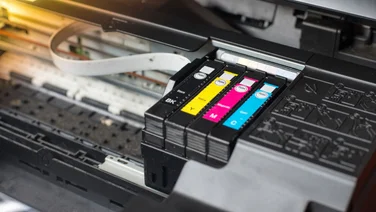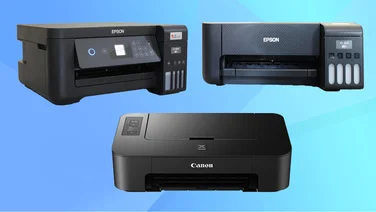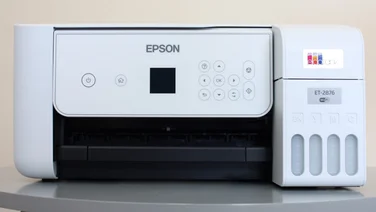To help us provide you with free impartial advice, we may earn a commission if you buy through links on our site. Learn more

Canon’s PIXMA PRO-100S is an update to the PIXMA PRO-100 we reviewed in 2013. Once we got our hands on the new model, however, it became clear that the changes extend only to compatibility with Canon’s PIXMA Cloud Link service. You need to print a code to register as a new user, but to do so you’ll need a screen, which the PIXMA PRO-100S doesn’t have, rather undermining the feature.

This printer supports PIXMA Cloud Link, but Canon couldn’t tell us how to sign up
Like its predecessor, the PIXMA PRO-100S is one of the cheapest A3+ photo printers around, yet with an engine employing eight inks it promises high enough print quality to satisfy even professional photographer, without costing the earth.
Despite the competitive price, this is still an expensive printer, and it certainly doesn’t look or feel like a budget model. The thick plastic body encases a print engine that’s strengthened with metal for better precision, while the main paper input and output trays feel like they’d survive a small explosion. The single-sheet multipurpose feed at the rear can print different sizes or types of paper without unloading the main tray. Our one complaint is that there’s nothing to stop you inserting cartridges into the wrong colour slots.

While rival products from Epson and those from higher up the PIXMA PRO range use pigmented inks, the PIXMA PRO-100S uses dye-based cartridges. That’s a particularly good thing if you want to make high-gloss prints, but it’s less so if image permanence is paramount. Canon’s Chromalife 100+ system promises fade resistance of more than 30 years for photos displayed under glass, but this may not be enough to qualify as ‘archival quality’, which isn’t ideal for anyone planning to sell their prints.
This eight-ink system combines the usual black, cyan, magenta and yellow with lighter photo cyan and photo magenta, for improved shade control and less graining in lighter areas. Grey and light grey inks help further with shade control, and let the printer produce black and white prints with no unwanted colour tone. The stated resolution is an unremarkable 4,800×1,200dpi with a middling three-picolitre droplet size, but even when using an eyeglass we could barely pick out any grain.

The print driver offers comprehensive options. You can print without borders all the way up to the maximum A3+
The results were very good, particularly when using Canon’s top-end Photo Paper Pro Platinum. Photos were pleasingly crisp and detailed, while colours were punchy and nuanced without being over-saturated. Our black and white test print was completely neutral, with particularly good detail visible in the mid-tones. However, black regions were noticeably less intense than we’ve seen from Epson photo printers using Epson’s venerable six-colour engine, which also uses dye inks.
Using the highest possible quality and tested over wired Ethernet, this printer is quick, delivering each 6×4″ photo in about 90 seconds, a borderless A4 print in three and a half minutes, and a borderless A3 print in five and a half minutes. Each 6×4″ photo should cost around 47p, with 28p of that being the cost of Canon’s paper – cheaper alternatives are available.

We wouldn’t recommend this printer for extensive plain paper printing. It also hung during our colour graphics test
This printer is overkill for most amateur photographers, but it remains the best choice for pro and semi-pros needing an A3+ printer on a modest budget. PIXMA PRO-100 owners won’t need the upgrade though. If it doesn’t fit your needs then check out our Best printers and buying guide.






